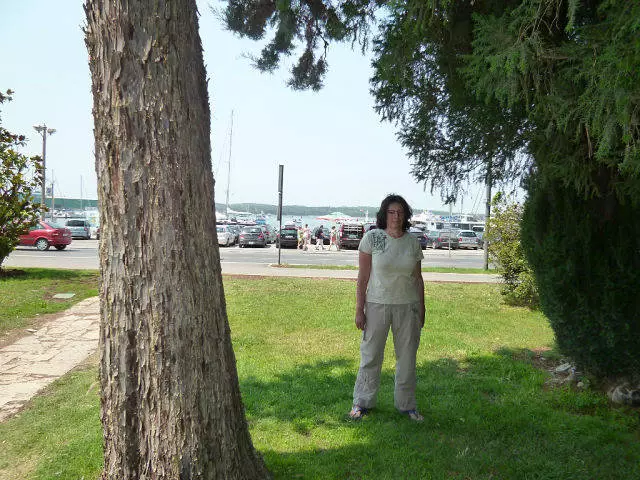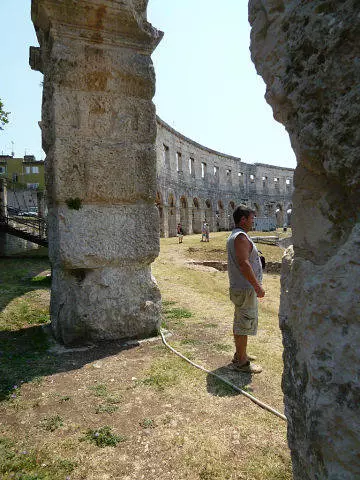Roman Amphitheater - Main Point Landmark
Amphitheater

Of course, the Roman Amphitheater is considered the main attraction of the pool. It is located in close proximity to the embankment, it is convenient and inevitable to be parked (2 euros) and public transport is suitable for it. Even if you are not a ravine lover, the aircraft is worth spending 6 euros on the amphitheater, because the construction is a grand and unusual. It is necessary to immediately notice that the pool is quite a big city - 50 thousand people and probably a couple of tens of thousands of vacationers. It has no problems with public transport and infrastructure. And therefore, if the entire historical route is interesting, it is easier and cheaper to travel or walk along the signs. The city is posted by arrogers-pointers of routes: monuments of the Roman era, monuments of the Middle Ages. These they start from the Roman amphitheater . So if you are a lover of antiquities, then start with the amphitheater.
Embankment in front of the amphitheater

The Roman name of the pool city was Colonia Pietas Iulia Pola and because the main attractions of the pool are certainly about the Roman era. it Triumphal Arch Sergi and huge. The arch was erected in honor of the victory in the sea battle under the excium in 31 BC. e. In it, Mark Anthony and Cleopatra opposed the Oktavian Navy, who was commanded by Mark Vipsani Agrippa. It was the last of the battles of civil wars in Rome, Octavian won in him and became the first Roman emperor under the name of August. The amphitheater, of course, was built, too, during August. Still preserved remnants: A fortress wall with a gate, two theaters and a well-preserved temple of August.
From the sixth century n. e. Pula was the center of Byzantine shipbuilding. To the Byzantine era, here are the Byzantine Basilica (Church of St. Nicholas) In which today the Orthodox Cathedral and the current Catholic Co-Cathedral ( Cathedral of Ascension to the Blessed Virgin Mary ) built by the Byzantine Kashtell fortress . Then, from the 11th century, it belonged to Venice. They rebuilt the Kashtell fortress.
In the 13th century it was built Town Hall Building . From the 13th century, the pool was influenced by the Austrian Dynasia of the Minehardingers, the counts of the Graphic of Gours and competing the Sergi family with him. It was a period of its complex relationship with Venice, the struggle for independence and other complex feudal relations. From the 18th century, the pool entered, like the entire Istria, part of the Holy Roman Empire of the German nation, and after its decay of Austria-Hungary. And after the end of the First World War, it was part of Yugoslavia.
Before the beginning of World War II, more than 60% of the population of the pool was Italians and only a quarter of Croats. Today, Croats here are three quarters, and Italians are no more than 4%. As happens everywhere in Western history, this is due to the fact that Italy fought on the side of Germany. And although the Italians were not deported, they simply preferred to leave the country against whom they fought.
After August, the amphitheater completed Westpasian in 69-79 years. The legend says that he rebuilt him for his beloved. Amphitheater accompanied OK. 23 thousand viewers and was intended for gladiator fights: between gladiators and animal fighting. This is the sixth largest from Roman amphitheators, an Arena 132 was 105 meters, and in its architecture there are three types of orders (of the five existing in general). Amphitheater is built from limestone, in bad weather, it was covered with sails from above. The height of the structure is 32.45 m. In addition to the gladiator fights, it was carried out by the grand imitation of marine fighting - Navamakhi. These were the most prestigious antiquity show!

Nowadays, they first conducted film festivals, and now hold a festival of history. There are theatrical performances, concerts, operas and films.
Still in the pool Museum of shipbuilding And very significant Archaeological Museum of Istria.
